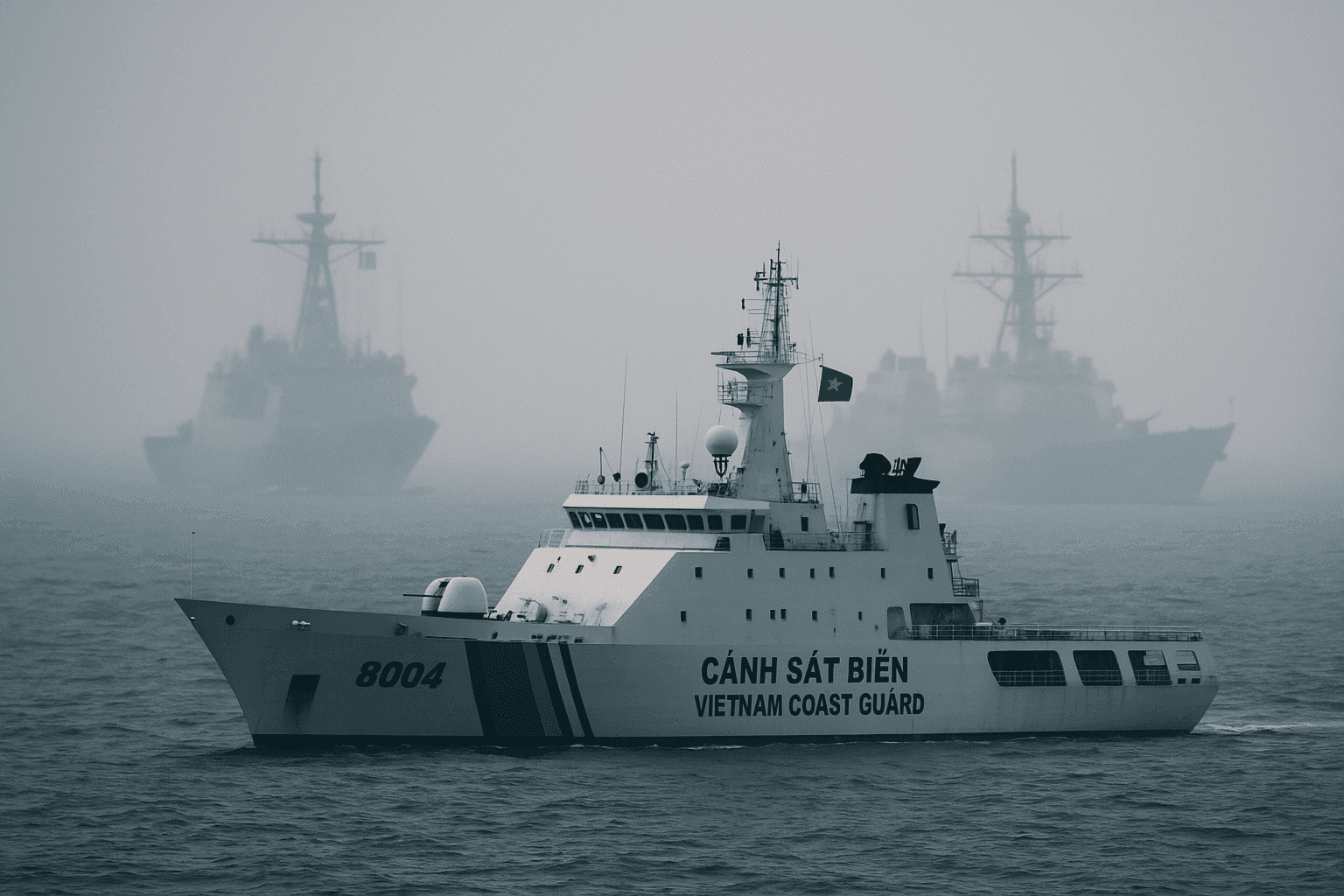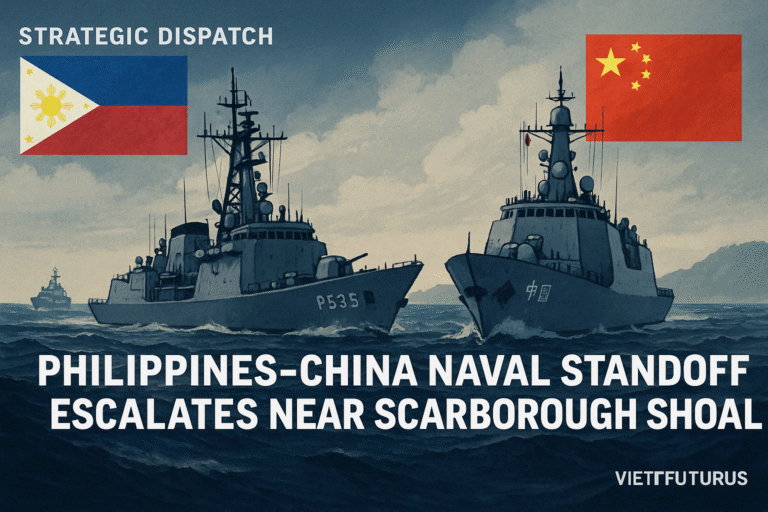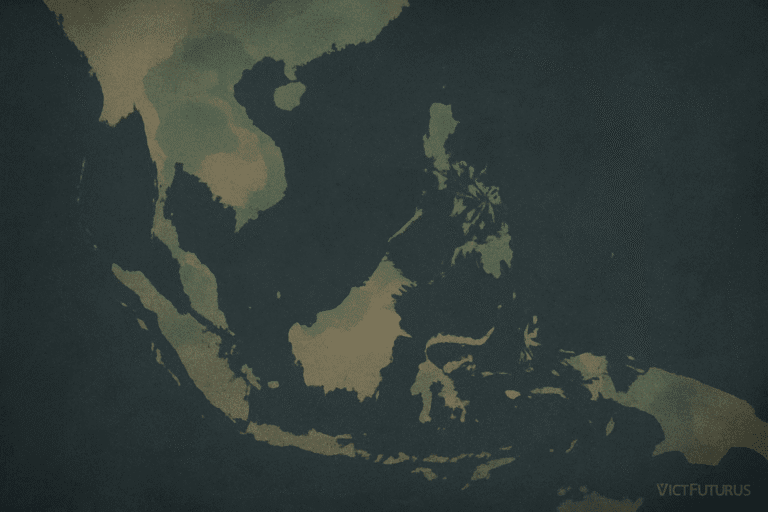Vietnam’s Foreign Policy Is Not Neutral. It’s a Strategic Silence.
Vietnam’s Strategic Silence in a World on Fire
In a global theater marked by the escalating crescendos of superpower rivalry and the tectonic shifts of regional orders, Vietnam finds itself perched upon a critical fault line – a nexus of geographical significance, economic dynamism, and ideological currents. While the strident clamor of U.S.–China tensions dominates international headlines, casting long shadows across the Indo-Pacific, Hanoi maintains a seemingly uncharacteristic quietude. This is not the silence of neutrality, nor the stillness of indecision. Instead, it is a carefully cultivated strategic silence – a deliberate and nuanced foreign policy posture honed over centuries of relentless struggle for survival, punctuated by periods of intense conflict and intricate negotiation.
Vietnam is far from being a passive observer on the world stage, nor does it idly sit on the fence, awaiting the dictates of larger powers. Rather, it operates as a calculating actor, skillfully walking the precarious “bamboo line,” exhibiting remarkable flexibility and resilience without succumbing to external pressures.
As the South China Sea transforms into a volatile geopolitical flashpoint and the Association of Southeast Asian Nations (ASEAN) grapples with internal divisions and external pressures on its cohesion, Vietnam’s apparent “quietness” speaks volumes. It is a message in itself – one that reveals a unique foreign policy ethos forged in the crucible of ambiguity, underpinned by an enduring resilience, and deeply informed by the enduring weight of historical memory.
From Bamboo Diplomacy to Strategic Silence
The concept of bamboo diplomacy, eloquently introduced under the leadership of General Secretary Nguyễn Phú Trọng, has served as a potent metaphor for Vietnam’s foreign policy approach, likening its posture to the resilient bamboo – deeply rooted in fundamental principles of national sovereignty and independence, yet exhibiting remarkable flexibility and adaptability in its engagement with the external world. However, as we navigate the complexities of 2025, this metaphor, while still holding resonance, requires further evolution. The deep roots of national interest and self-determination remain firmly entrenched, but the geopolitical winds swirling around Vietnam have intensified, carrying with them the potential for greater turbulence.
As U.S. freedom of navigation operations in the South China Sea become more frequent and assertive, directly challenging China’s expansive territorial claims, and as China continues its build-up of artificial islands, transforming submerged features into fortified outposts armed with sophisticated missile systems, Vietnam’s silence is not a manifestation of indecision or a lack of awareness.
Instead, it serves as a carefully calibrated signal. The deliberate avoidance of formal military alliances, the strategic hedging of economic dependencies across multiple partners, the quiet yet persistent dialogues conducted behind closed doors through various diplomatic channels – all are meticulously calculated components of this strategic silence. Hanoi understands that in its delicate geopolitical position, any misspoken word or ill-conceived action could have profound and potentially detrimental consequences. Therefore, its silence is not merely an absence of noise; it is a conscious method of survival, a shield against unwanted entanglement, and a tool for preserving precious room to maneuver in an increasingly constrained environment.
The Growing Pressure of Picking Sides
The regional chessboard upon which Vietnam navigates is visibly shrinking, the spaces between major powers becoming increasingly contested. With the Quadrilateral Security Dialogue (QUAD) solidifying its strategic contours, the Australia-United Kingdom-United States (AUKUS) trilateral security pact forging a deeper technological and military alliance, and China accelerating its use of economic coercion as a tool of foreign policy in Southeast Asia, Vietnam faces mounting and increasingly explicit pressure to “choose sides.”
U.S. defense officials, seeking to bolster a united front against perceived Chinese assertiveness, are actively pursuing deeper military ties and security cooperation with Vietnam. Beijing, in turn, issues thinly veiled warnings against “external interference” in the region, emphasizing the importance of bilateral solutions and cautioning against aligning with powers it views as hostile. Simultaneously, Tokyo and New Delhi, both seeking to counterbalance China’s growing influence, actively court Hanoi with offers of substantial infrastructure development deals and enhanced security partnerships. This pressure is not merely theoretical or abstract; it manifests in concrete transactional engagements, where every port development project, every energy pipeline proposal, and every foreign policy decision is scrutinized through the lens of great power competition.
Yet, Vietnam, drawing upon its long history of resisting external domination, is resolutely playing a long and intricate game. By maintaining a strategic silence, by refraining from definitive pronouncements of alignment, it skillfully preserves its room to maneuver, keeping its options open and avoiding premature commitments that could limit its future strategic choices. Still, the inherent tension of this balancing act is becoming increasingly palpable, threatening to become unsustainable. The critical question remains: how long can Vietnam effectively maintain this carefully constructed ambiguity when every port of call, every energy pipeline route, and every facet of its domestic and foreign policy is being subtly and sometimes overtly pulled toward one pole or another?
South China Sea – From Dispute to Powder Keg
Vietnam’s strategic silence finds its most evident – and arguably most vulnerable – expression in the complex and increasingly fraught dynamics of the South China Sea. China’s expansive and legally contentious nine-dash line claim encroaches deeply upon Vietnam’s internationally recognized Exclusive Economic Zone (EEZ), directly threatening its vital fishing industries, its offshore oil and gas exploration activities, and, most fundamentally, its sovereign rights over its maritime territories.

Despite these persistent provocations, which include the deployment of Chinese coast guard vessels in Vietnamese waters, the harassment of Vietnamese fishermen, and the construction of infrastructure on contested islands, Vietnam has consciously avoided escalatory language and overtly aggressive actions.
Instead, its response has been characterized by a measured and strategic restraint. Hanoi meticulously files diplomatic notes with international bodies, documenting China’s actions and reiterating its legal claims. It quietly strengthens the capabilities of its coast guard and maritime law enforcement agencies, enhancing its ability to patrol its waters and protect its interests without resorting to military confrontation. Furthermore, it strategically welcomes foreign investment into its port infrastructure projects, subtly diversifying its economic partners and creating a delicate balance against overwhelming Chinese economic influence in the region.
In essence, Hanoi is engaged in a form of “strategic infrastructure” development, building resilience and optionality without resorting to overt displays of nationalist fervor or aggressive posturing. However, time may not be an indefinite ally in this delicate balancing act.
The ongoing U.S.–China competition in the South China Sea is demonstrably shifting from a primarily rhetorical contest to one with tangible military deployments and the ever-present risk of miscalculation. Should a significant skirmish or a more serious conflict erupt in these contested waters, Vietnam may no longer have the luxury of maintaining its strategic silence. The imperative to act, to protect its core interests, could override its carefully cultivated policy of restraint.
ASEAN’s Fragile Core and Vietnam’s Calculated Distance
Vietnam is a foundational and key member of ASEAN, recognizing the bloc’s potential as a platform for regional stability and collective bargaining power. However, Hanoi no longer places its sole strategic bets on ASEAN’s ability to effectively address the complex challenges of the current geopolitical landscape.
The bloc’s well-documented struggles to forge a unified consensus on the critical issue of the South China Sea, often hampered by the diverse national interests of its member states and susceptible to external influence, particularly from China, have demonstrably weakened its overall geopolitical weight and its ability to present a united front against external aggression or coercion.
In response to these limitations, Vietnam has strategically widened its network of bilateral and multilateral partnerships, engaging more actively with countries like India, Japan, and Australia – all key players in the Indo-Pacific seeking to maintain a balance of power in the region.
This is not a move towards forming formal military alliances, which would directly contradict Vietnam’s long-standing policy of non-alignment. Instead, it represents a quiet but deliberate diversification strategy, creating a web of overlapping interests and potential support mechanisms.
This strategic silence allows Vietnam to maintain its commitment to ASEAN’s principles of regionalism and multilateralism while simultaneously preparing for a potential future where ASEAN’s collective influence may be further diminished. This dual approach is neither an act of betrayal nor a strategic retreat; rather, it is a pragmatic exercise of sovereign decision-making, ensuring Vietnam’s long-term security and autonomy in an uncertain regional environment.
Historical Memory as Strategy
Vietnam’s foreign policy is profoundly and inextricably shaped by the enduring weight of its historical memory. Centuries of Chinese domination, the protracted and often brutal experience of French colonial subjugation, and the devastating entanglements of the Cold War have left an indelible mark on the nation’s strategic psyche.
Vietnam knows firsthand what it means to be the geographical battlefield of empires, a pawn in the grand strategies of more powerful nations. Its current strategic silence is not a novel invention; it is a contemporary manifestation of a deeply ingrained ancestral wisdom – a cautious approach born from centuries of navigating treacherous international currents.
Hanoi’s reluctance to speak loudly on the global stage is rooted in a profound understanding of history – a recognition that loud pronouncements and aggressive posturing have often led nations, particularly smaller ones, down perilous paths. Its foreign policy is not merely articulated in diplomatic communiqués; it is etched in the scars of past conflicts and guided by a deep-seated sense of caution.
However, this strategic restraint should not be misconstrued as a lack of resolve. History also serves as a potent reminder that when pushed beyond its limits, when its fundamental sovereignty and national interests are directly threatened, Vietnam has repeatedly demonstrated a fierce and unwavering willingness to fight – decisively and, if necessary, alone. The spirit of Dien Bien Phu and the resilience displayed during the Vietnam War remain powerful undercurrents in the nation’s strategic calculus.
Silence is Strategy — Until It Must Break
In conclusion, Vietnam’s strategic silence is not a manifestation of weakness or indecision. It is a carefully cultivated discipline, a sophisticated survival code born from the intricate interplay of its unique geographical positioning, the enduring lessons of its historical experience, and a pragmatic understanding of the often-ruthless mathematics of global power dynamics.
However, silence, by its very nature, is a temporary strategy. Eventually, the waters of the South China Sea may erupt in conflict, the gravitational pull of the major global powers may become too strong to resist, and the delicate middle ground upon which Vietnam currently stands may begin to dissolve.
When that inevitable day arrives, Vietnam’s foreign policy will not suddenly shift direction; rather, it will unfold, revealing deeper layers of strategic intention that have been carefully considered and prepared for during this period of deliberate quietude. Until that moment, Vietnam’s strategic silence must be understood not as an absence of agency or influence, but as a potent form of presence – a watchful anticipation of future challenges. It is not an act of neutrality, passively awaiting the outcome of great power competition, but a proactive state of preparation, ensuring that when the time for decisive action comes, Vietnam will be ready to defend its sovereignty and secure its future in a world perpetually on fire.








One Comment